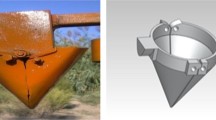Abstract
With an increased demand for high-quality transplants, vegetable growers have begun to purchase grafted transplants from specialized propagators. These are often shipped over long distances, but improper transport conditions can deteriorate transplant quality. To determine the appropriate period and temperature for transporting grafted transplants, we stored cucumber and tomato transplants in darkness at 6, 9, 12, 15, and 18 o C for 3, 6, 9, 12, and 15 days, and subsequently cultivated these in a greenhouse for 15 days. We investigated the changes in plant height and SPAD value during storage, as well as the early growth of the stored transplants during subsequent cultivation. Increasing temperature during storage promoted stem elongation in both transplant species, with cucumber transplants showing greater stem elongation than tomato transplants. SPAD values of cucumber and tomato transplants tended to decrease with increasing storage temperature, declining even further with extended storage period. The cucumber transplants stored for 3 days and the tomato transplants stored for 6 days, showed no decrease in percent survival and no delay of growth after transplanting compared with non-stored transplants. From these results, we suggest that the appropriate temperature for transporting cucumber and tomato transplants in darkness is 6°C, and the appropriate period of storage in darkness are 3 and 6 days for cucumber and tomato transplants, respectively. Controlling transportation conditions can avoid the deterioration of transplant quality during transport and the delay of early growth after transplanting.
Similar content being viewed by others
Literature Cited
Cantliffe DL (1993) Pre-and postharvest practices for improved vegetable transplant quality. HortTechnology 3:415–418
Cushman LC, Pemberton HB, Miller Jr JC, Kelly JW (1998) Interactions of flower stage, cultivar, and shipping temperature and duration affect pot rose performance. HortScience 33:736–740
Heins RD, Lange N, Wallace TF (1992) Low temperature storage of bedding-plant plugs. In K Kurata, T Kozai, eds, Transplant Production Systems. Kluwer Academic Publishers, Dordrecht, The Netherlands, pp 45–64
Kaczperski MP, Armitage AM (1992) Short-term storage of plug-grown bedding plant seedlings. HortScience 27:798–800
Kozai T, Kubota C, Sakami K, Fujiwara K, Kitaya Y (1996) Growth suppression and quality preservation of eggplant plug seedlings by low temperature storage under dim light. Environ Control Biol 34:135–139
Kubota C, Kroggel M (2006) Air temperature and illumination during transportation affect quality of mature tomato seedlings. HortScience 41:1640–1644
Kubota C, Kroggel M, Solomon D, Benne L (2004) Analysis and optimization of long distance transportation conditions for high quality tomato seedlings. Acta Hortic 659:227–234
Kubota C, Seiyama S, Kozai T (2002) Manipulation of photoperiod and light intensity in low-temperature storage of eggplant plug seedlings. Sci Hortic 94:13–20
Kwack Y, Chun C (2015) Changes in quality and vigour of cucumber and paprika transplants as affected by storage temperature under dark condition. Korean J Hortic Sci Technol 33:633–637
Risse LM, Moffitt T, Bryan HH (1979) Effect of storage temperature and duration on quality, survival, and yield of containerized tomato transplants. Proc Fla State Hortic Soc 92:198–200
Sato F, Okada K (2014) Daily red LED illumination improves the quality of cabbage plug seedlings during low-temperature storage. J Horticult Sci Biotechnol 89:179–184
Sato F, Yoshioka H, Fujiwara T (1999) Effects of storage temperature on carbohydrate content and seedling quality of cabbage plug seedlings. Environ Control Biol 37:249–255
Sato F, Yoshioka H, Fujiwara T, Higashio H, Uragami A, Tokuda S (2004) Physiological responses of cabbage plug seedlings to water stress during low-temperature storage in darkness. Sci Hortic 101:349–357
Author information
Authors and Affiliations
Corresponding author
Rights and permissions
About this article
Cite this article
Kwack, Y., Lee, JH. & Chun, C. Proper period and temperature for transportation of cucumber and tomato transplants. Hortic. Environ. Biotechnol. 57, 554–559 (2016). https://doi.org/10.1007/s13580-016-0158-x
Received:
Revised:
Accepted:
Published:
Issue Date:
DOI: https://doi.org/10.1007/s13580-016-0158-x




